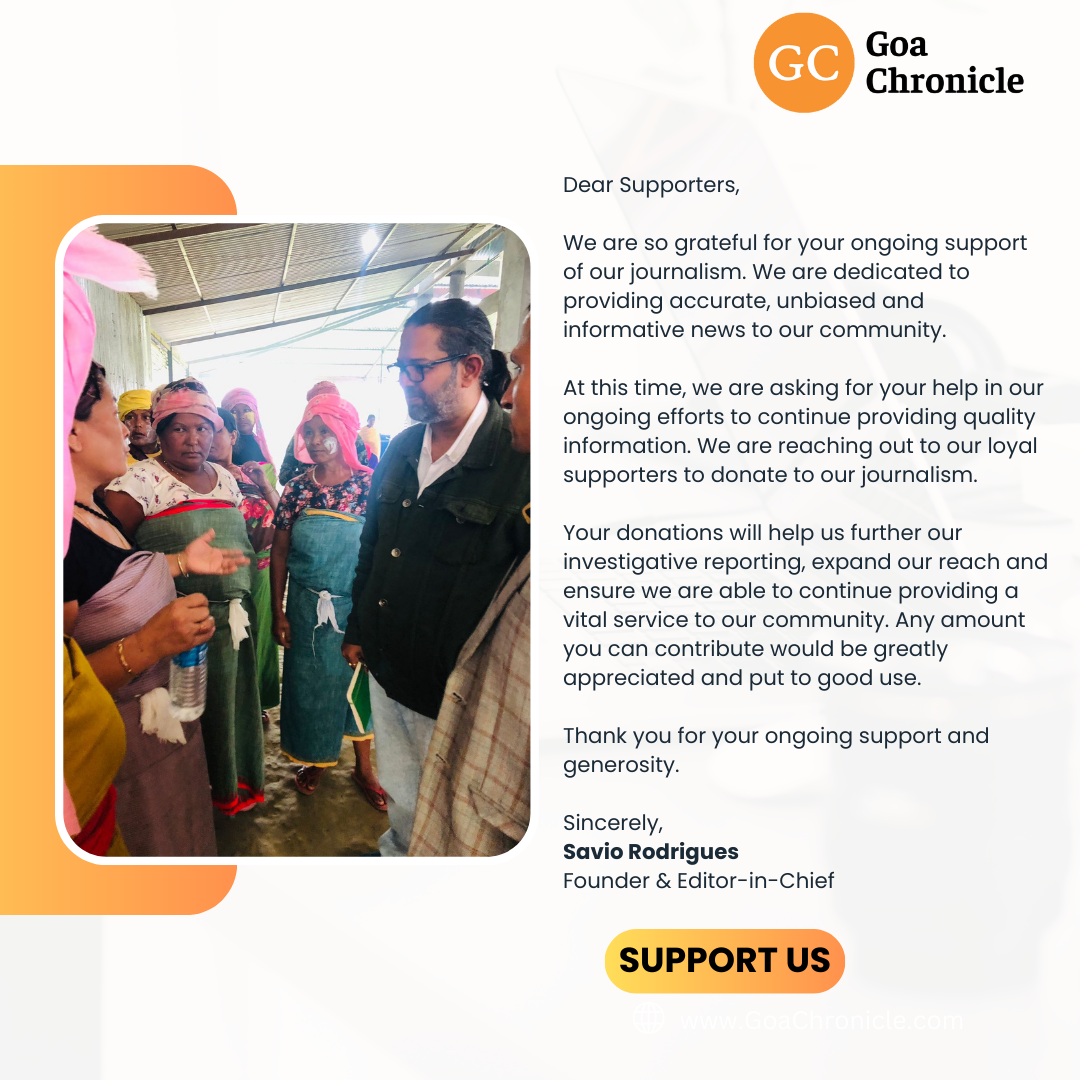In its latest report, ‘Women and Ageing: Invisible or Empowered’, released on June 14, HelpAge India, which is a leading NGO working for the disadvantaged elderly population of the country, has touched upon various facets of the lives of elderly women in India, from health and social security to economic safety. The data in the report have been taken from a sample size of 7911 elderly women across the country, and reveal some salient characteristics regarding how they continue to thrive and face certain challenges in today’s society.
As far as financial security for elderly women in India is concerned, the study carried out by HelpAge India reveals that 47 percent of them feel that they are financially secure, while the rest, 53 percent, do not feel so. The proportion of women who feel financially insecure is highest in the states of Jharkhand, 85 percent, West Bengal, 83 percent, and Tamil Nadu, 74 percent. Out of those who feel financially secure, 79 percent stated that they believe so because their children support them, 35 percent stated that they have a good pension, 24 percent said that they still work and earn, and 6 percent revealed that they have good amounts of savings.
Another important facet of old age is the elderly’s volunteering status. The National Human Rights Commission (NHRC) places importance on ensuring that older people are able to live a productive life. Productivity in old age, leads to healthier ageing, while also allowing old persons to make a longer and more valuable contribution to society. Older adult volunteering is a key activity for ensuring productivity, having various mental health benefits. Old-age volunteering is also considered to be important from an economic resource generations perspective.
The study reveals that in India, 69 percent of the older women are not engaged in volunteering work, and only 19 percent out of them showed a willingness to undertake volunteer work and contribute to the society. The women who are not willing to do any volunteer work belong mostly in Himachal Pradesh, 96 percent, Karnataka, 93 percent, and Chandigarh, 93 percent. Majority are from rural areas, 82 percent, in the age group of 80-90 years and most of them are illiterate.
Next, if we look at health security, according to the World Health Organization (WHO), older women are more likely than men to have chronic, or ongoing, health conditions, and are also more likely to have multiple health conditions at a given time. Within India, chronic conditions are seen to be common among older women due to negligence among other factors. Their health seeking behaviour is also seen to be somewhat lacking, due to negligence, lack of awareness, financial support etc.
In the study, 45 percent of the older women reported no chronic conditions, 33 percent have 1-2 chronic conditions, 8 percent have 3-4 chronic conditions, 7 percent have more than 4 chronic conditions, and 7 percent are unaware about their chronic health status. And when it comes to health seeking behaviour, 68 percent of the elderly women undergo regular treatment, while 32 percent do not. Out of those who do not seek regular health treatment, 64 percent say they are healthy, 16 percent believe health treatment is costly, 10 percent feel the clinic/hospital is far away from their place, 24 percent stated that health treatment is only need based for them, and they only visit for the same if they have a problem.
The global and national increase in aged population cohorts reveals an improvement of socio-economic development, which has increased longevity. However, it also means that there is now a greater need for holistic healthcare, which places a level of burden on individuals, families and healthcare systems at various levels. India has been subjected to this increased burden, with the elderly being privy to unattended and undiagnosed chronic diseases, unaffordable medicines and treatments, and malnutrition.
In recognizing these changes, the Ministry of Health & Family Welfare through its National Programme for the Health Care of Elderly (NPHCE), has been working towards addressing various health related problems of elderly people. One of the primary mandates of the programme has been to ensure the provision of accessible, affordable, and high-quality long-term, comprehensive and dedicated healthcare treatment and other services for the elderly.
In this context, the study reveals that while all older women access health facilities, this access is seen to be varying when it comes to accessing treatment in public and private health institutions, or a blend of both. 36 percent of the older women use public health facilities, while 24 percent use the private ones, and 41 percent use both. And as far as satisfaction from the medical treatment received is concerned, 74 percent of them are satisfied, 18 percent are not, and 8 percent are not sure about the same.
36 percent of the older women reported having difficulties in accessing treatment at some point, this being highest in Karnataka, 73 percent, Himachal Pradesh, 63 percent, and Uttarakhand, 60 percent. Top 4 reasons for facing such difficulties include high cost of medical care or medication, 60 percent; lack of health providers in nearby areas, 49 percent; no or insufficient health insurance coverage, 38 percent, and limited transport options, 36 percent.
From a longitudinal perspective, 53 percent of the older women have reported that they have observed changes in the healthcare treatment provided by health facilities, from when they were younger, to now in their old age. Of these women, 75 percent reported that they have witnessed positive changes in the healthcare treatment available.
This is reflective of a drastic improvement in the quality of healthcare treatments accessed by older women, as well as the ability of these women to recognize such changes. It is still important to note that for 47 percent of the women, there seems to be no change in terms of the type and quality of healthcare treatment that they have accessed over the years.
When it comes to suggestions on how to improve healthcare experiences, 50 percent of the respondents said that there should be improved availability of health facilities nearby, 43 percent said that there should be increased support and assistance at home, 41 percent say there should be comprehensive health insurance, and 36 percents believe there should be free availability of medicines.
It is widely recognized that older persons require healthcare related services more frequently than other age groups. This poses a challenge to India’s aim of achieving Universal Health Coverage (UHC), given the increasing expenditure on healthcare for older persons. In this scenario, Publicly Funded Health Insurance (PFHI) is considered to be an effective conduit to ensure improved access to healthcare, while also ensuring financial security of older persons and their households.
HelpAge India’s study shows that 65 percent of the older women have reported a lack of access to health insurances, while only 15 percent being covered under public health insurance programmes and schemes. The absence of health insurance coverage is seen to be highest among older women in Punjab, 93 percent, Tamil Nadu, 92 percent, Jharkhand, 90 percent, and Haryana, 86 percent.
An important role which is synonymous with women, is that of caregiving, which continues to exist with age. In the study, it is seen that 67 percent of the older women are indulged in caregiving duties at home. This proportion is seen to be higher in states like Karnataka (96%), Haryana, 91 percent, Uttar Pradesh, 89 percent, and Himachal Pradesh, 85 percent, with at least 85 percent older women undertaking caregiving in these states.
Out of those involved in caregiving, 1-2 hours are spent for the same by 39 percent, while 34 percent spend 2-5 hours, 12 percent devote 5-10 hours, and 15 percent give more than 10 hours. If we look at the impact of the caregiving roles being played by the elderly women in the Indian society, 50 percent believe that this role improves their well-being, 21 percent said that while the role improves their well-being to some extent, they feel burdened sometimes. On the other hand, 10 percent believe it decreases their well-being, and 19 percent ‘can’t say’.
At a household and community level, the health and wellbeing of older people is also dependent to a large extent upon how well their safety is maintained. Old age is known to make people prone to various challenges, which could also pose risks to their ability to live safely and independently at home and otherwise. It thus becomes necessary to look at the safety and wellbeing status of older persons, especially older women, who by virtue of their gender are likely to be more vulnerable to unsafe conditions.
In the study, it seen that 86 percent of the older women feel safe and secure in their neighbourhood areas. This sense of security and safety is reported to be highest in Karnataka, 99 percent, Telangana, 96 percent, Punjab, 95 percent, Tamil Nadu, 94 percent, Himachal Pradesh, 94 percent, West Bengal, 93 percent, and Andhra Pradesh, 92 percent.
Despite having a safe environment, it is seen that 43 percent of the older women fear of getting physical injuries within and around their households. 76 percent of these women have a fear of falling, 29 percent believe that there is a lack of elderly-friendly infrastructure in the household or society, another 29 percent believe that there is a lack of safe walking areas for the elderly in their locality, 35 percent are worried because of the risk of falling posed by nearby potholes, and 46 percent are worried because of a weak eyesight, which leads to frequent injuries.
When asked about suggestions for measures for better safety, 63 percent stated that there should be increased support from family members at home, 33 percent suggested access to full-time assistance or care-giving support, 34 percent suggested quick and reliable on-call support services for the elderly, 30 percent suggested designing houses, public buildings and roads to be more elderly-friendly, 35 suggested making public transport more elderly friendly, and 34 percent suggested improving street-lighting in the neighbourhood.
Linked with safety and security is the issue of elder abuse, which is defined by the WHO as ‘A single or repeated act, or lack of appropriate action, occurring within any relationship where there is an expectation of trust, which causes harm or distress to an older person’. The prevalence of elder abuse, as suggested by data for the year 2022, shows that 1 in every 6 people aged 60 and above experienced one or more forms of abuse in that year. The proportion of old persons facing abuse is suggested to increase in the coming years, as more countries witness rapid ageing of their populations.
The extent of abuse faced by elders is determined by various factors, a key factor being gender. Research shows that more women are victims of elder abuse than men, owing to reasons including longevity of women in comparison to men; image of women being weak and vulnerable; and elder women being more prone to having serious health conditions in comparison to men.
In this context, it was found that over 50 percent of the older women think that elder abuse is prevalent in society. Older women in Kerala, 87 percent, and Uttarakhand, 73 percent, agreed to this prevalence more, when seen in comparison to other states.
Contrarily, in states like Odisha, 78 percent, and Himachal Pradesh, 70 percent, the proportion of women denying the prevalence of elder abuse was extremely high.
When respondents were asked as to what they understood by the term ‘elder abuse’, for 50 percent, disrespect was an obvious form of abuse, for 31 percent, it is physical abuse like slapping or beating, for 37 percent, it is verbal abuse like shouting or insulting, for 21 percent, it is economic exploitation like financial manipulation, 10 percent believe it is unwelcome or forcible sexual contact, for 21 percent, it is neglect like abandonment or failure to provide necessary care, and for 16 percent, it is emotional or psychological abuse like intimidation or humiliation. 29 percent respondents said they ‘do not know’.
































